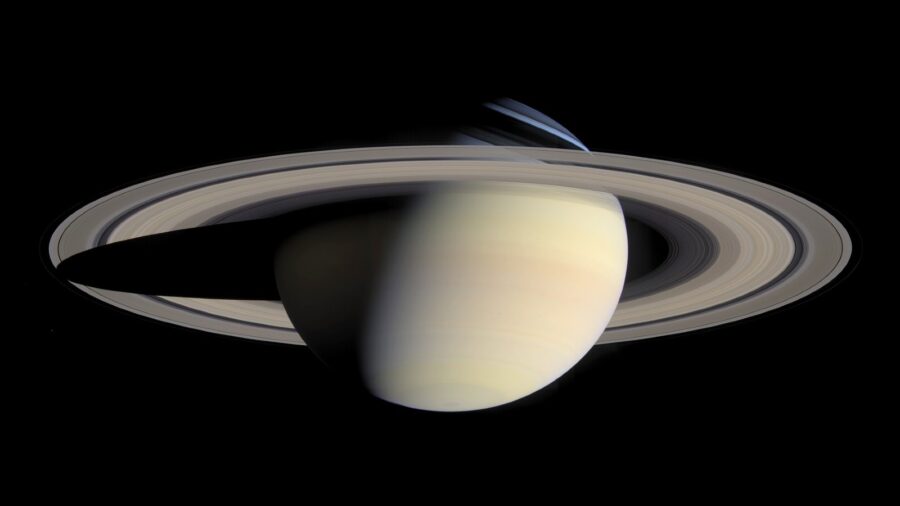Saturn Just Shocked Everyone By Revealing A Ton Of New Moons
Scientists have discovered over 60 more moons orbiting Saturn than previously spotted.

What do Saturn and the Twilight franchise have in common? They both have new moons! Dad jokes aside, The University of British Columbia just announced that scientists have discovered 62 new moons orbiting the sixth planet. The discovery means that Saturn is now in first place when it comes to the planet with the most moons in the Milky Way.
The previous holder of the “Most Moon-haver” title was Jupiter, with a paltry 95 recognized moons. Thanks to an international team of astronomers, we now know that Saturn has a total of 145 moons, making it not only the mooniest planet in our solar system but also the first to have over 100 moons period.
Dr. Edward Ashton, the astronomer responsible for initiating the research project, compared tracking Saturn’s moons to playing Connect the Dots as a child. “Tracking these moons makes me recall playing the kid’s game Dot-to-Dot, because we have to connect the various appearances of these moons in our data with a viable orbit,” said Ashton before adding that tracking the moons was like having 100 separate pictures on the same page and not knowing which dots connect to which picture.
Over the last 20 years, astronomers have repeatedly checked Saturn’s surroundings for moons, increasing the sensitivity of their searches as they’ve progressed. For this newest study, Dr. Ashton’s group used a “shift and stack” technique to find smaller moons caught in Saturn’s orbit. The shift and stack method had been used previously to search for moons around Neptune and Uranus, but Dr. Ashton and Co. were the first to apply the technique to Saturn.
The technique consists of shifting sequential images at the rate that the moon is moving across the sky. This shifting results in an enhanced signal from the moon when the data is combined, which in turn allows moons that are too faint to be seen in a single image to become visible once the images are stacked. The team shifted and stacked images taken during three hours bursts of time, allowing them to detect moons as small as 2.5 kilometers orbiting Saturn.

While many of the 63 new moons were discovered in 2019 when Ashton was a student at UBC, just knowing they existed didn’t give the astronomer enough data to determine if it was a moon instead of, say, an asteroid passing close to Saturn at the time the images were gathered.
In order to designate a celestial object as a moon, it must be tracked for several years to make sure it consistently orbits the planet it was found near. Once Dr. Ashton diligently matched objects detected on different nights over the course of two years, his team was able to track and confirm 63 never-before-discovered moons orbiting Saturn.
All of the new moons orbiting Saturn fall under the category of irregular moons. Irregular moons are characterized by a larger, more inclined orbit than a regular moon and are usually elliptical. Moons of the irregular variety tend to clump together into orbital clusters depending on the tilt of their orbit.
Saturn has three such groups, the Inuit group, the Gallic group, and the most populated group, the Norse group. That means the MCU was right, Space Vikings do exist. No word if Marvel‘s parent company Disney has tried to claim ownership of any of the new moons yet, but Disneyland Saturn is probably only a matter of time.












